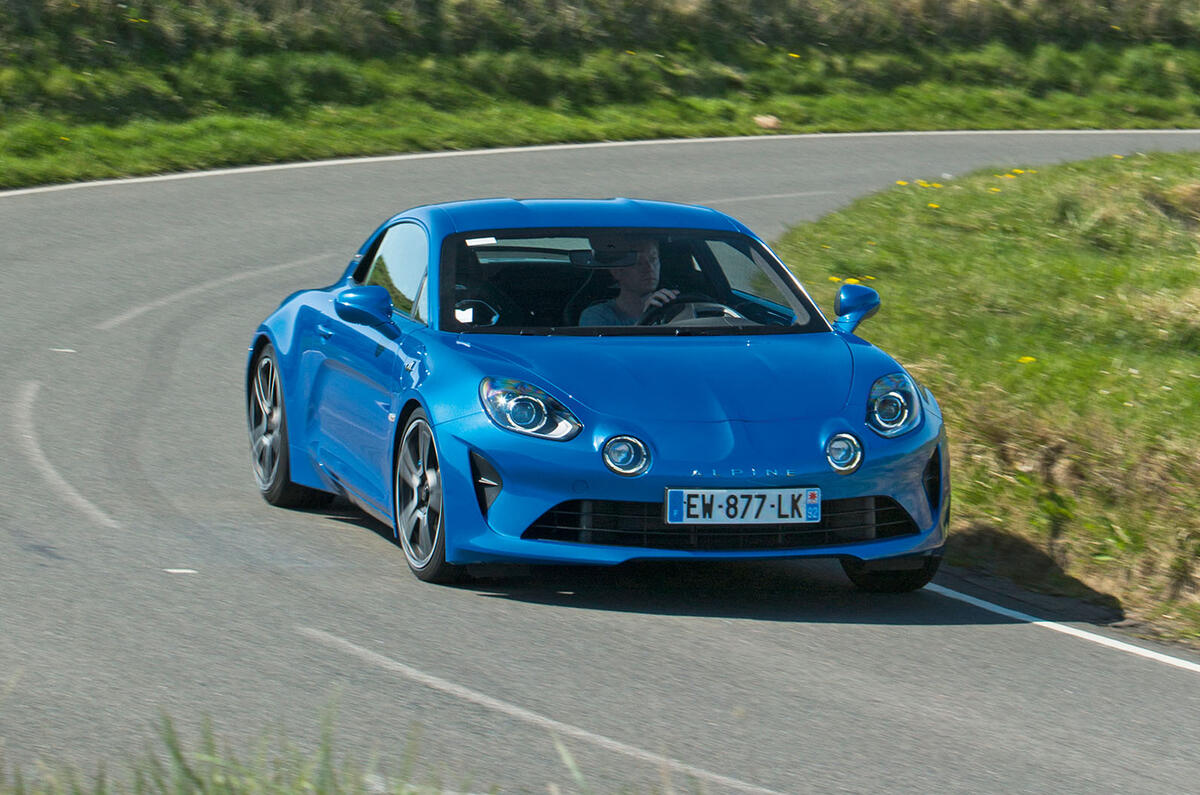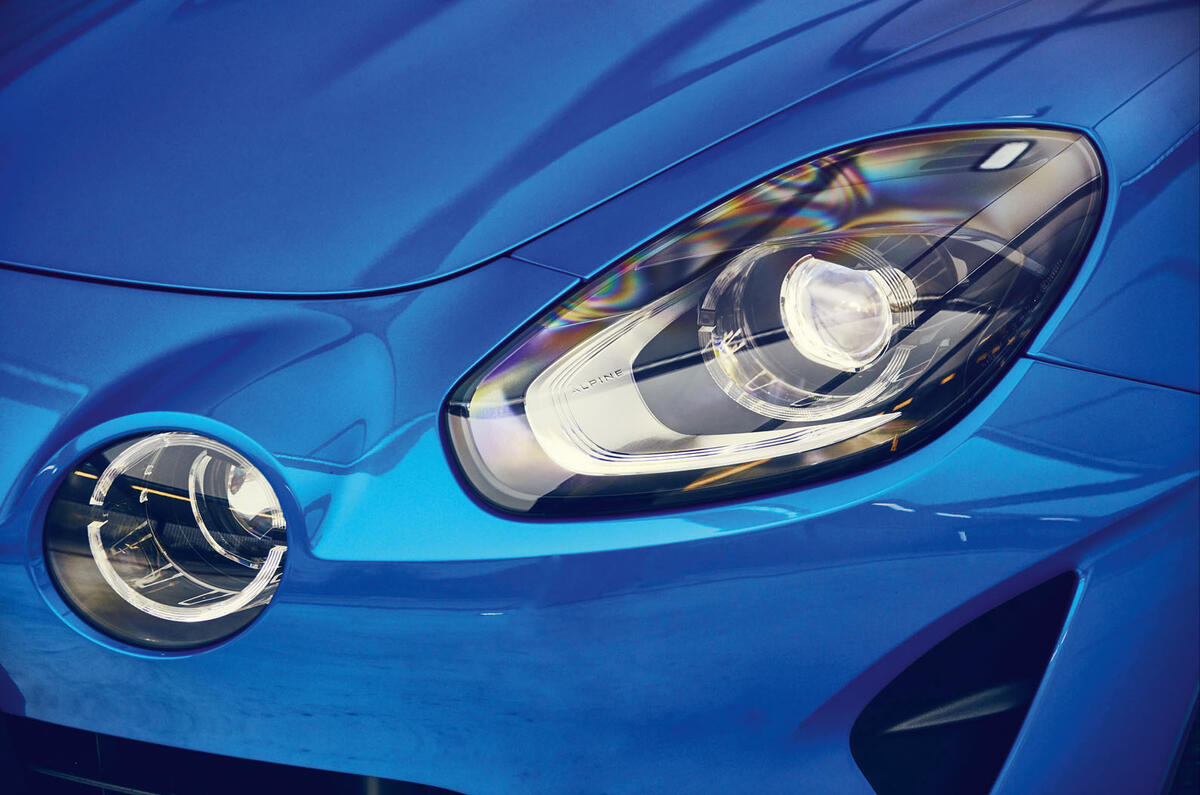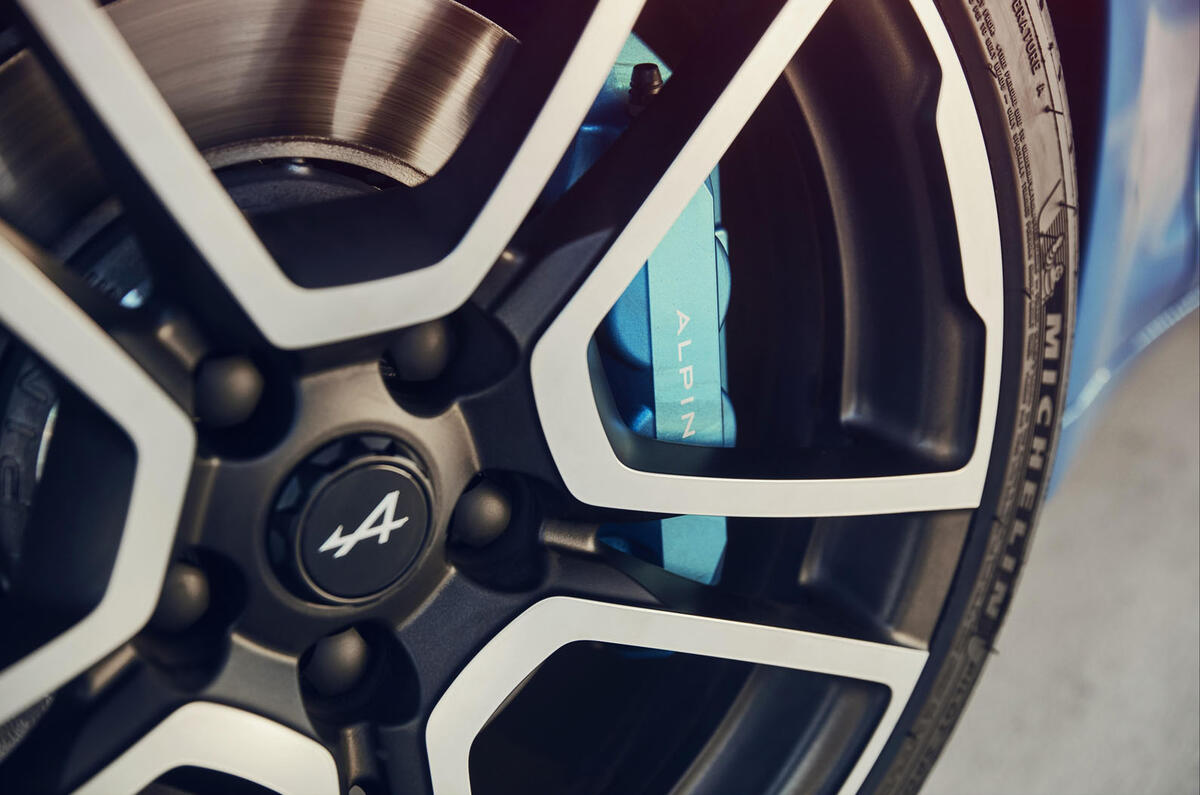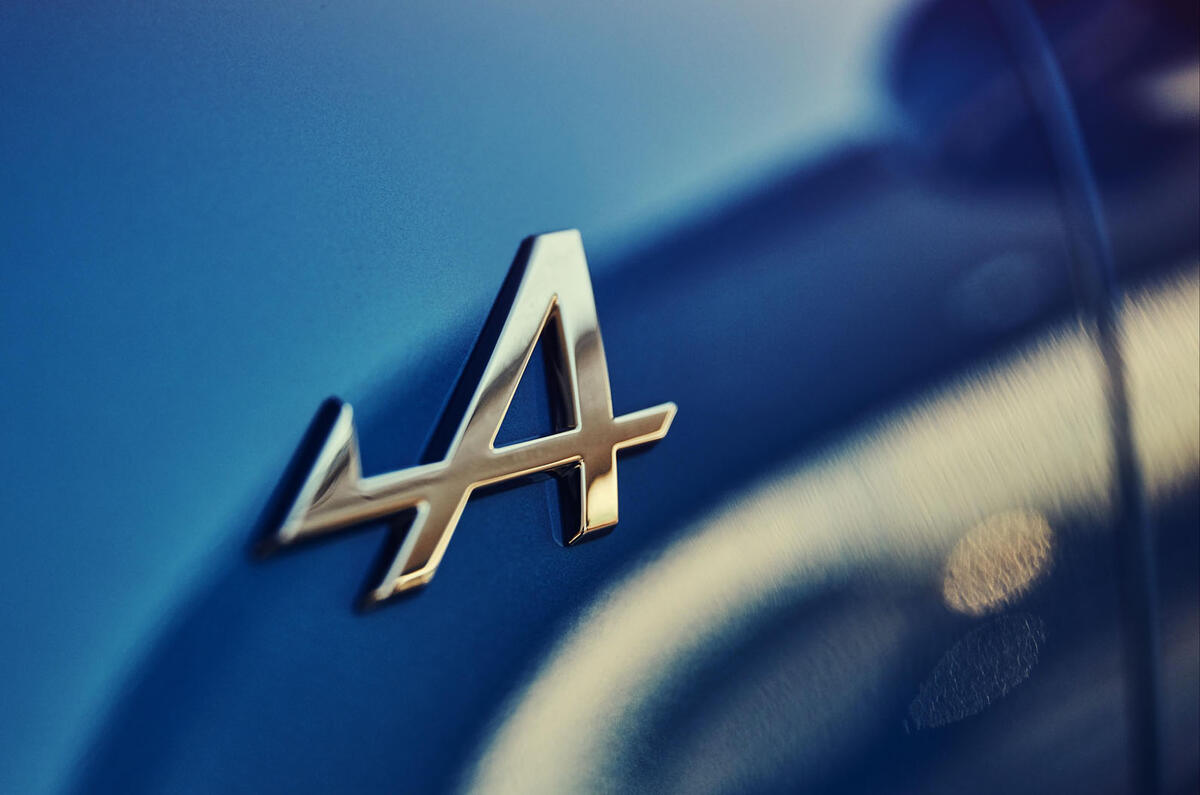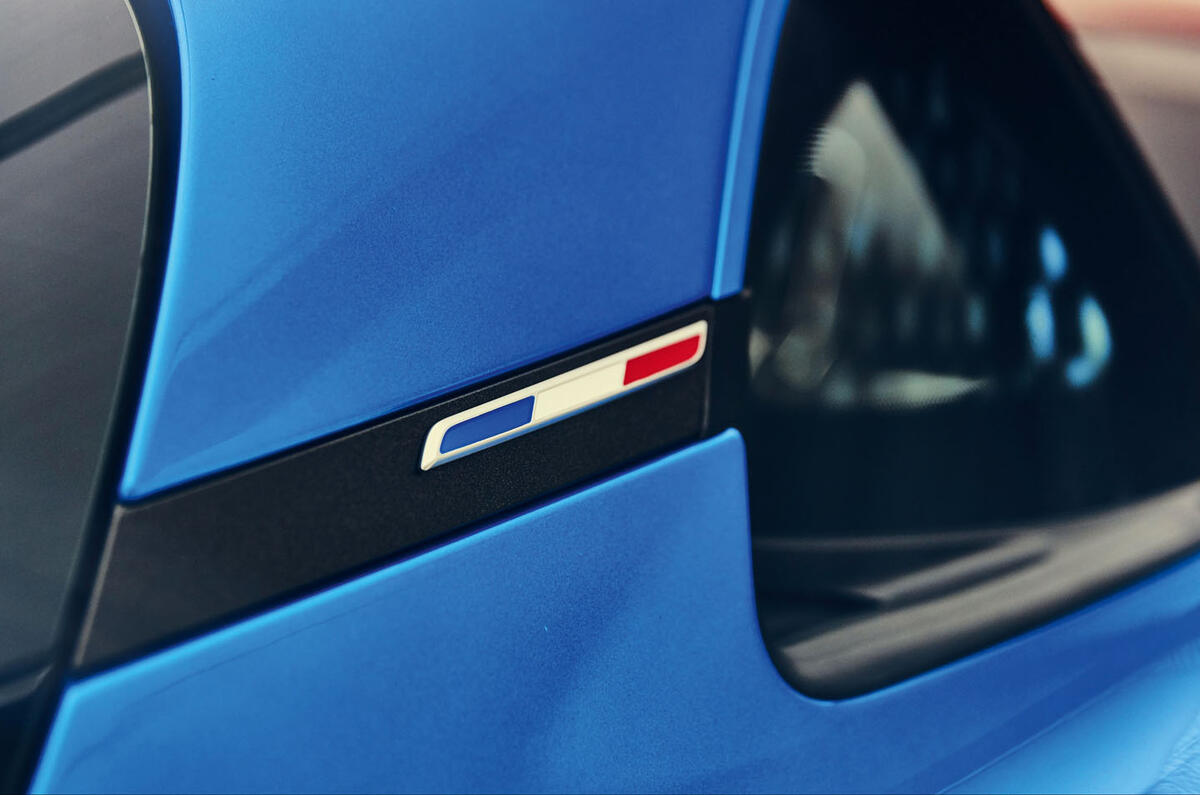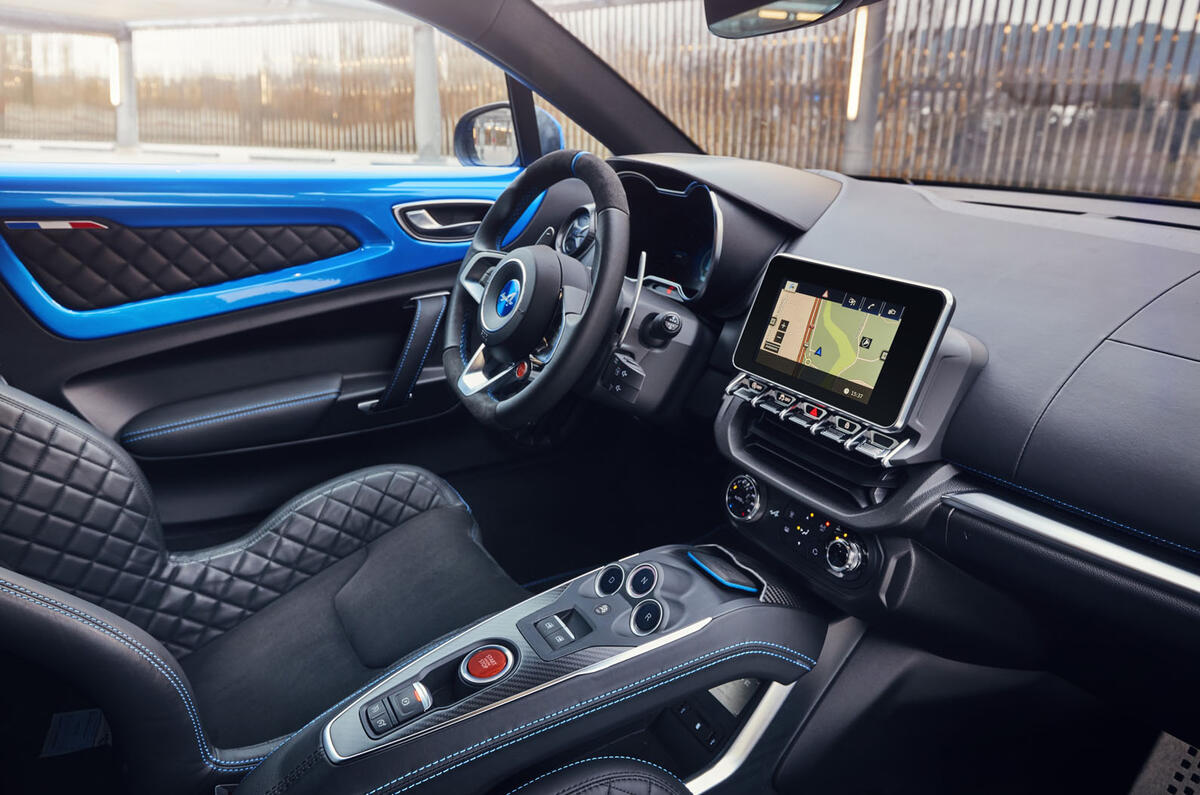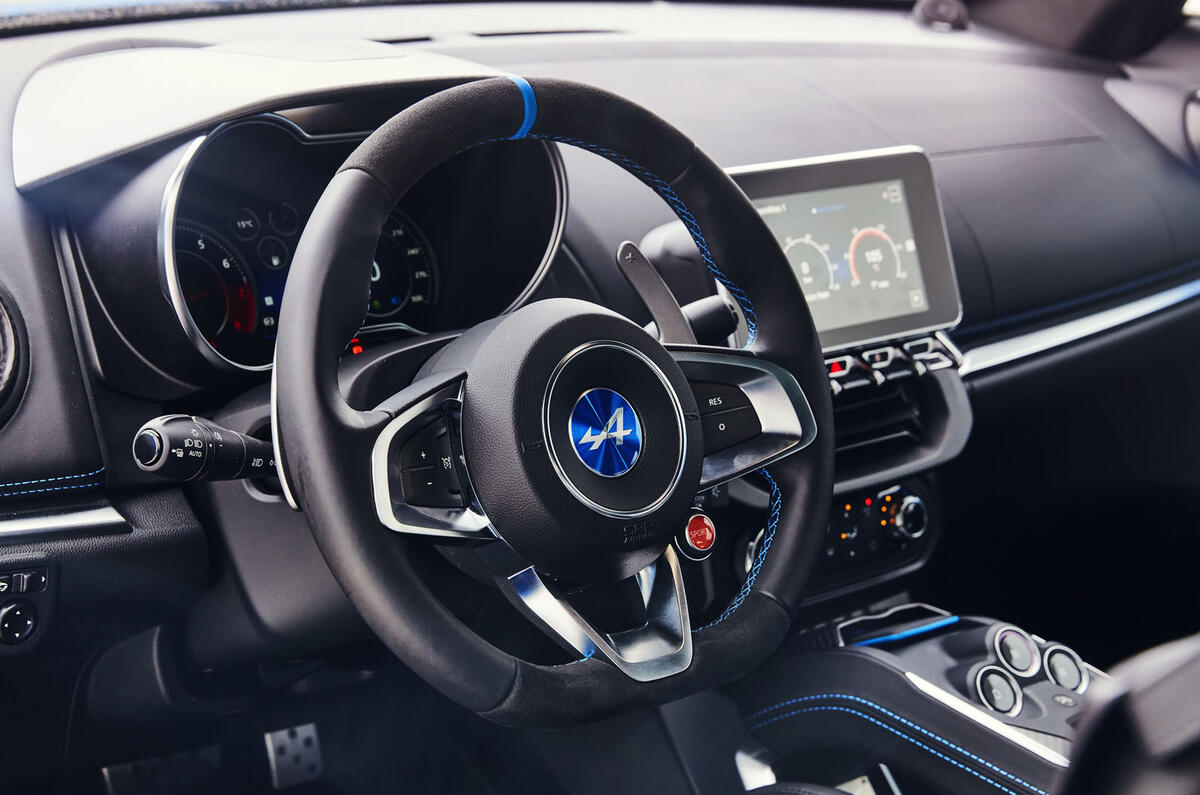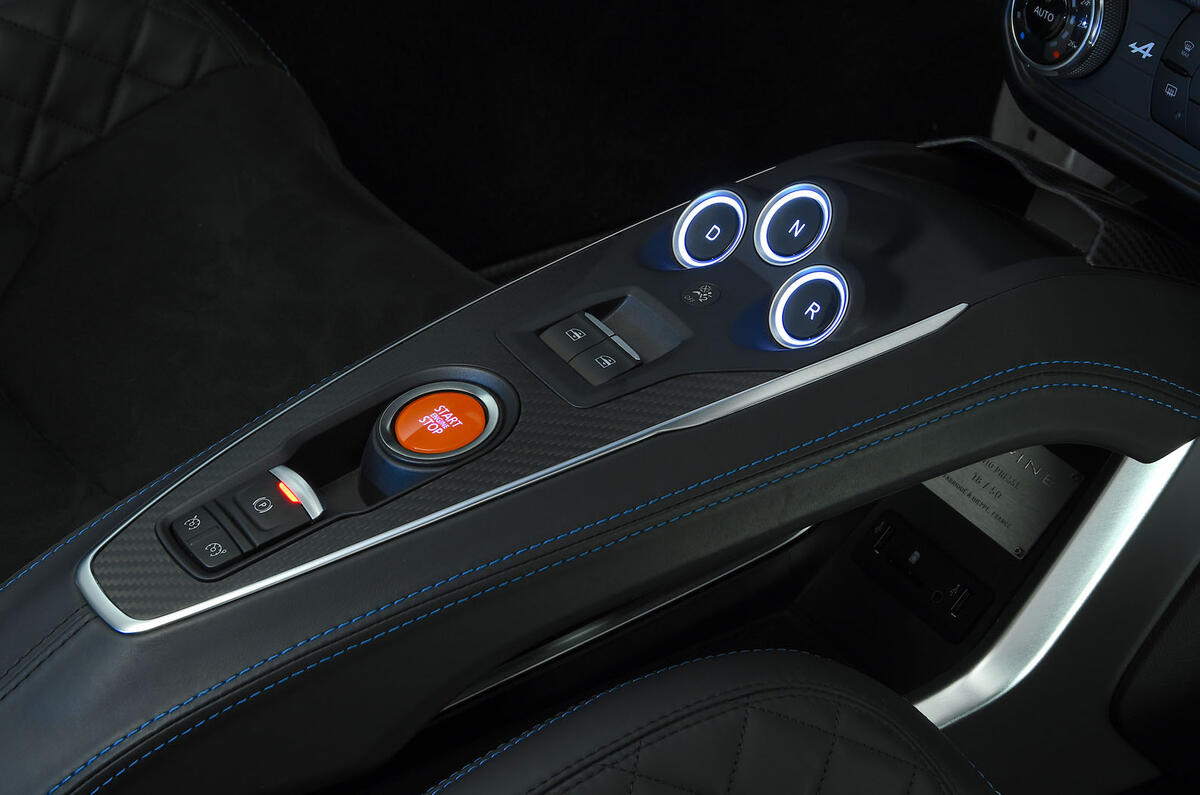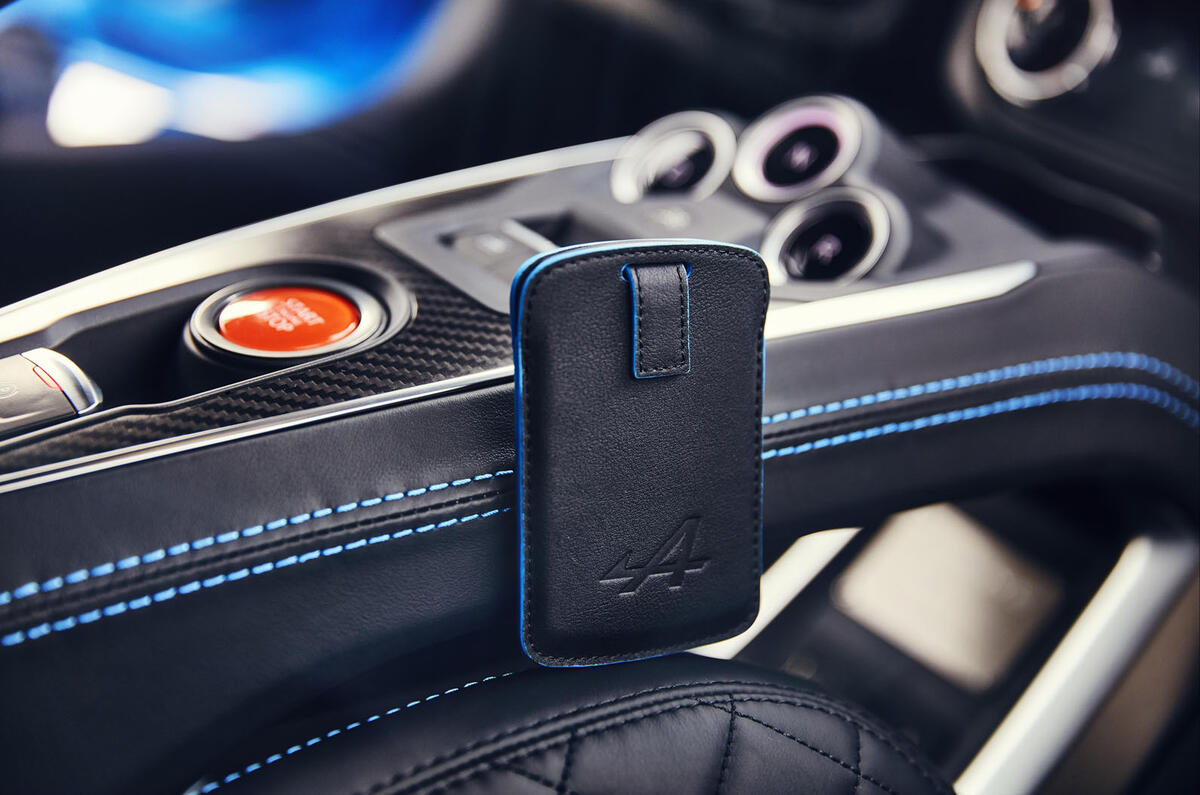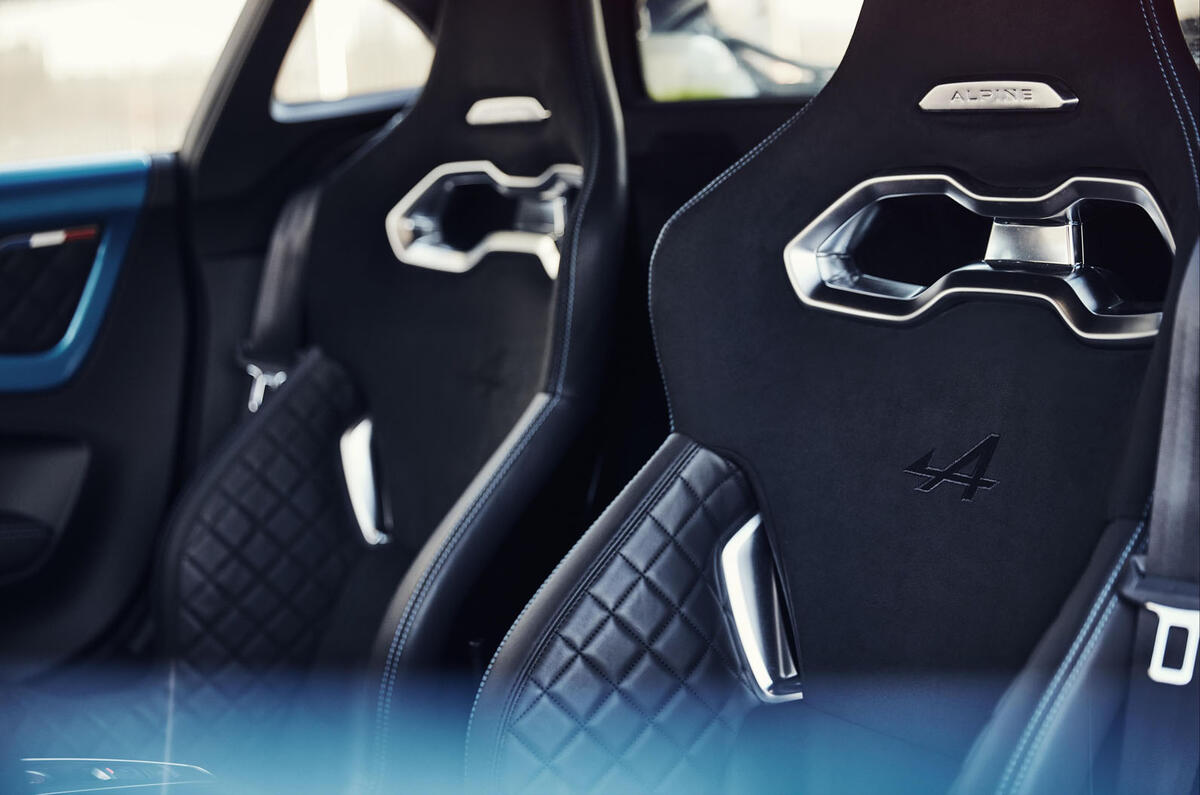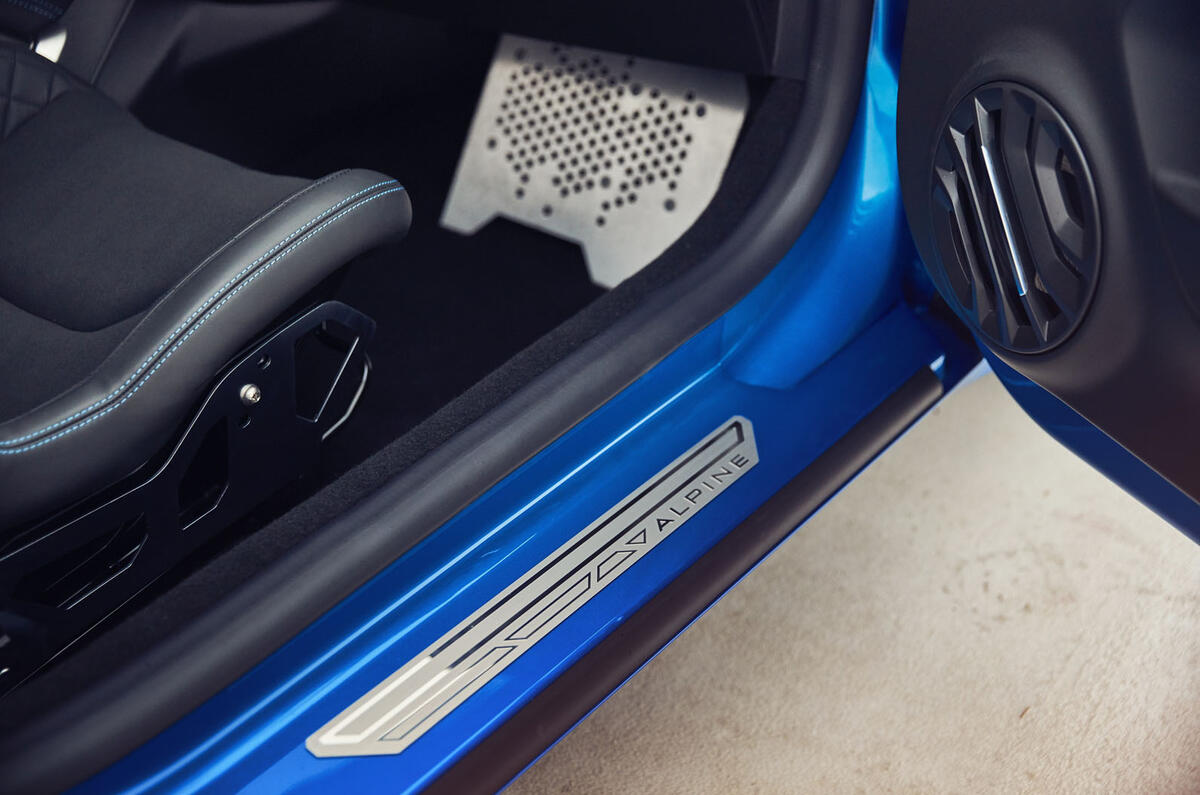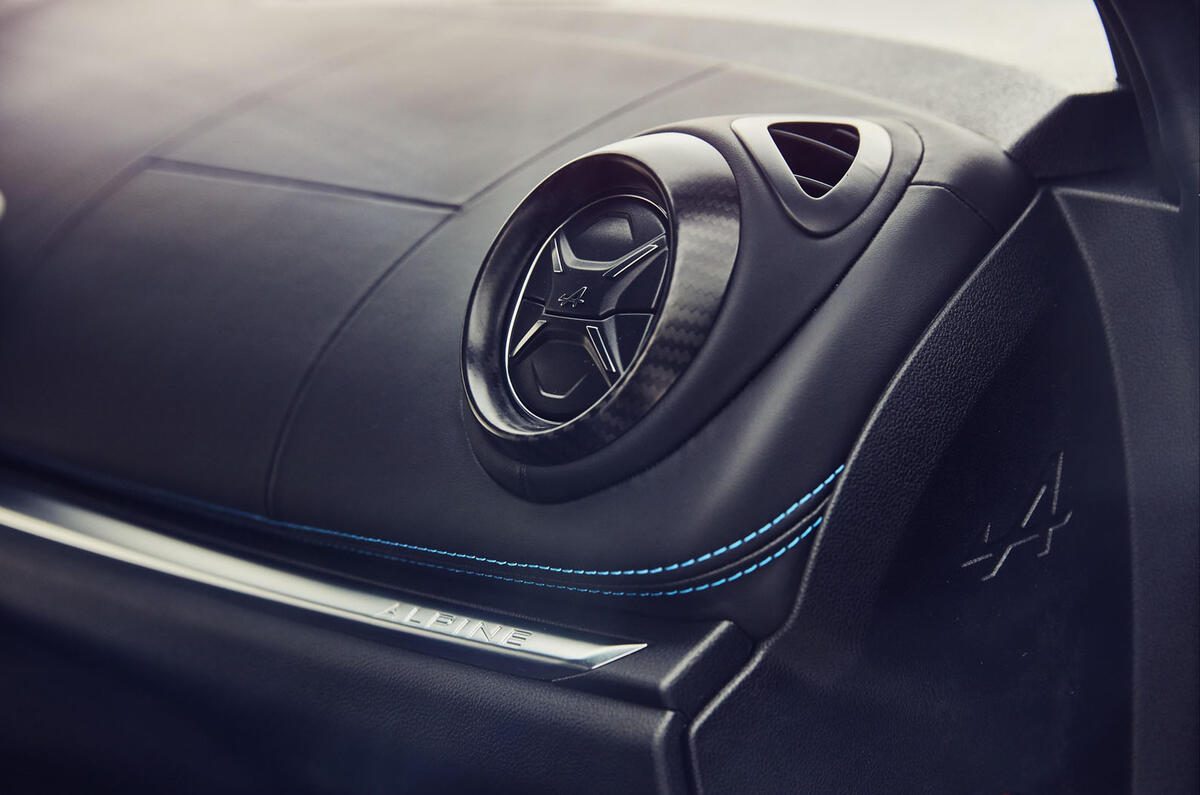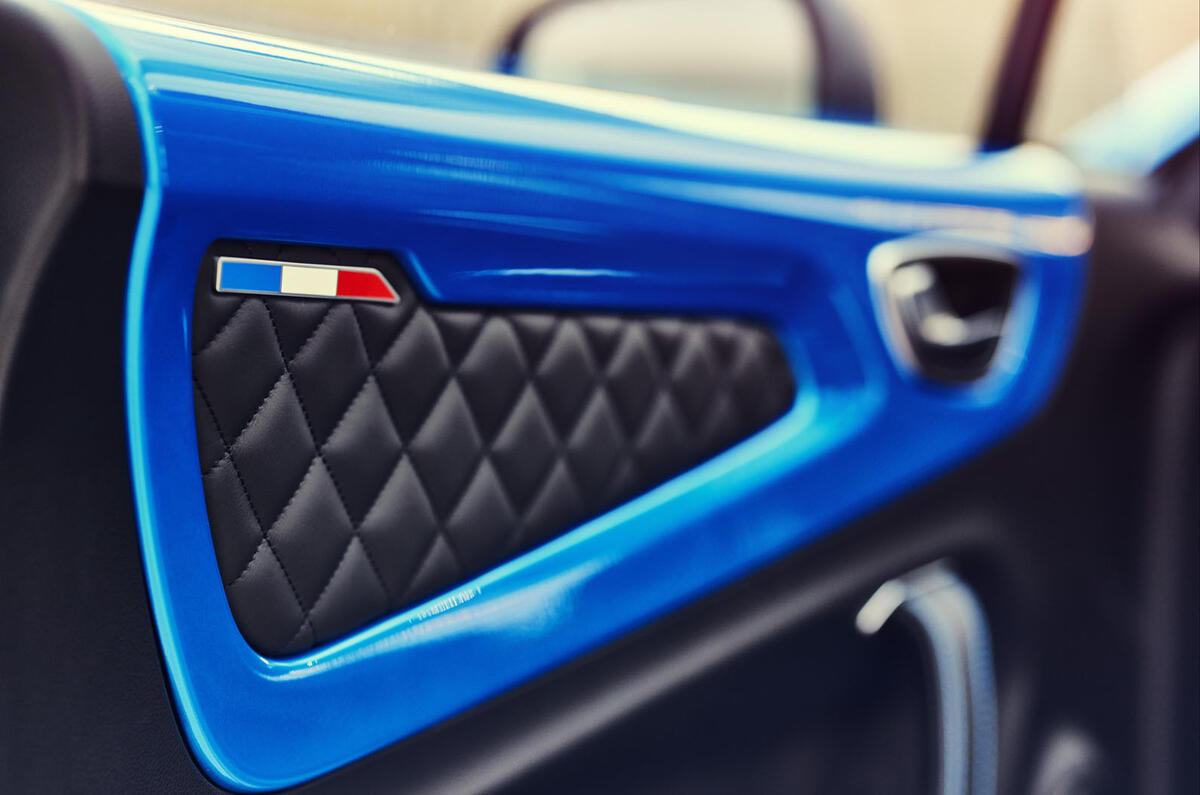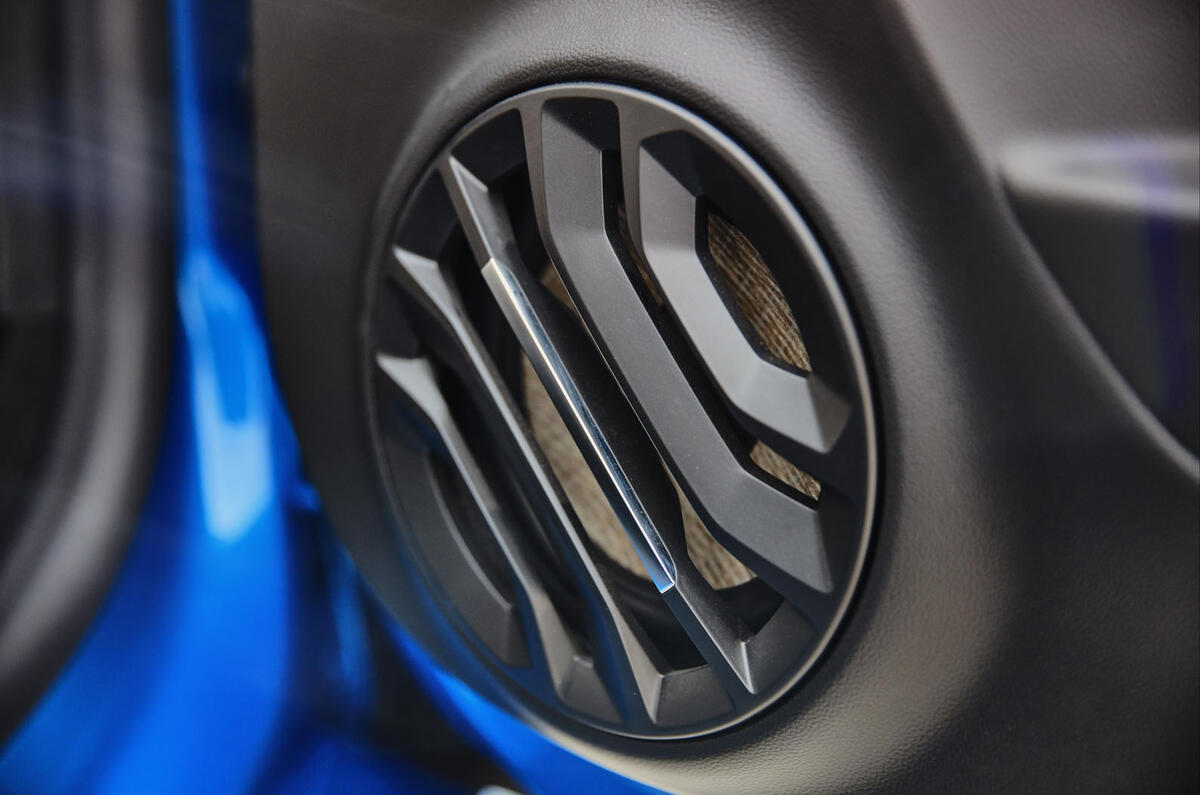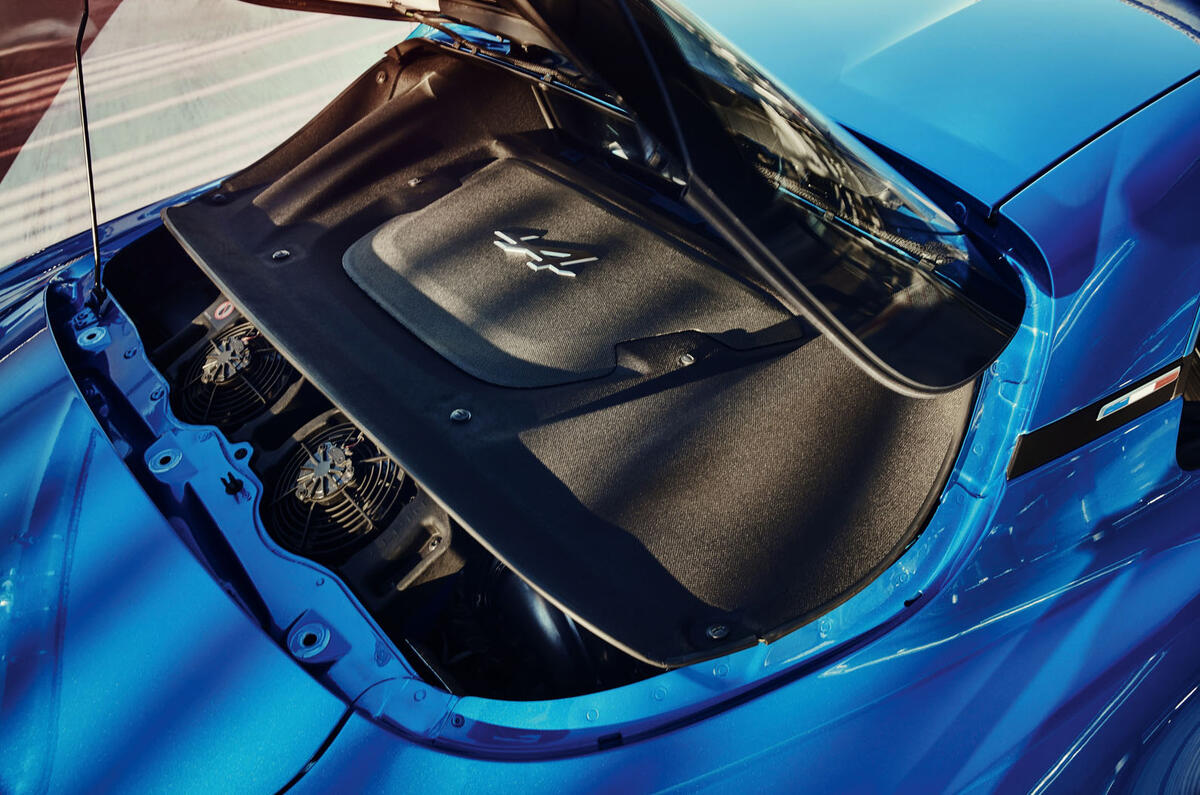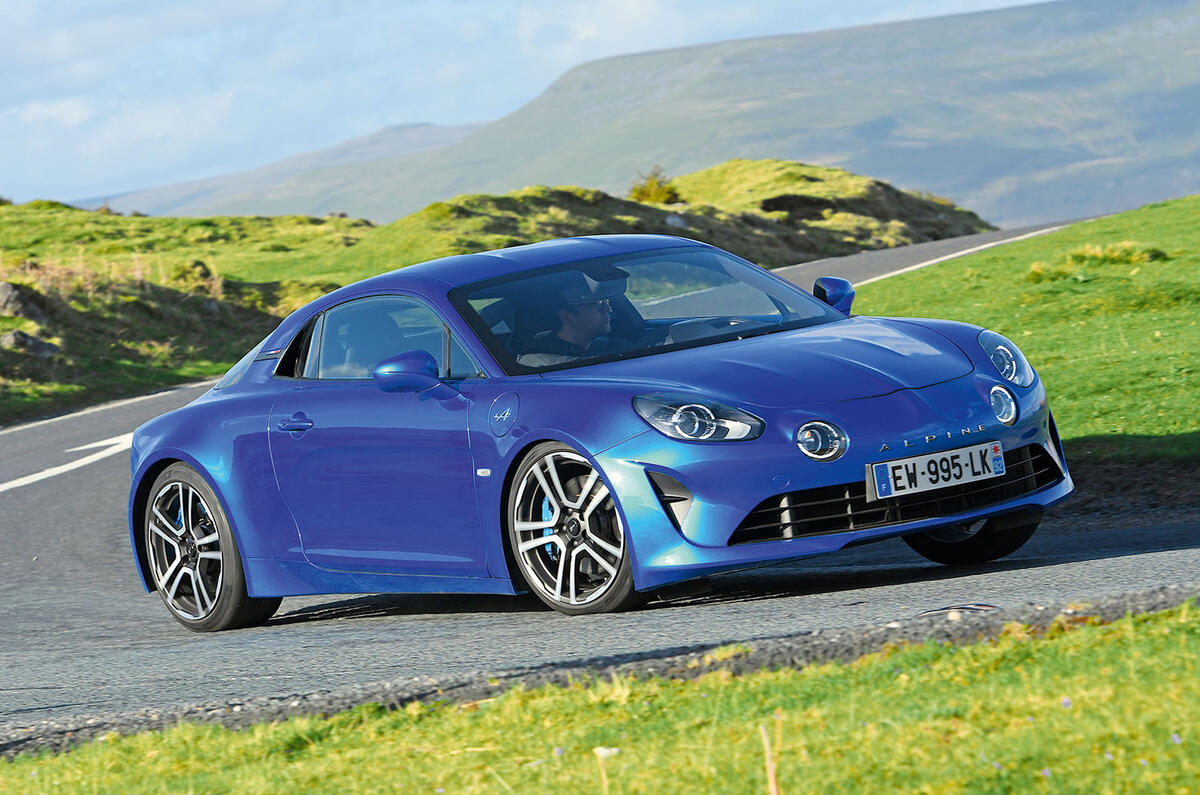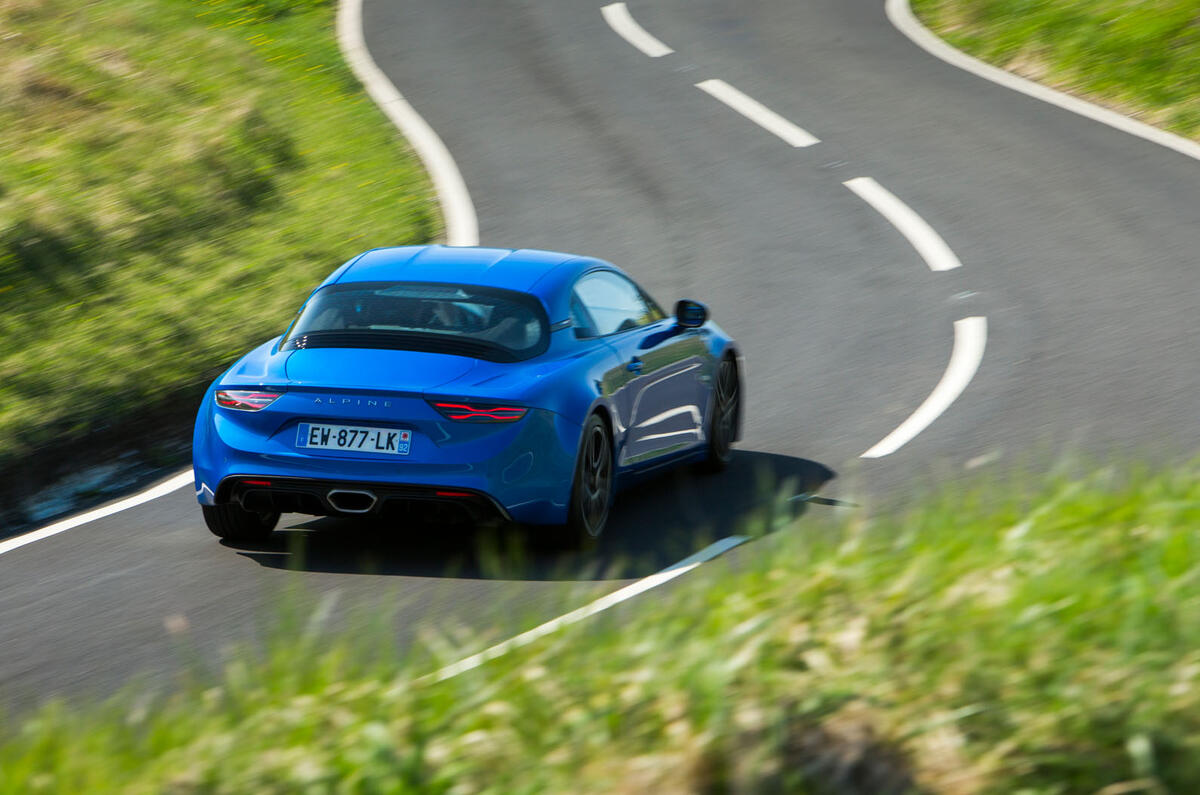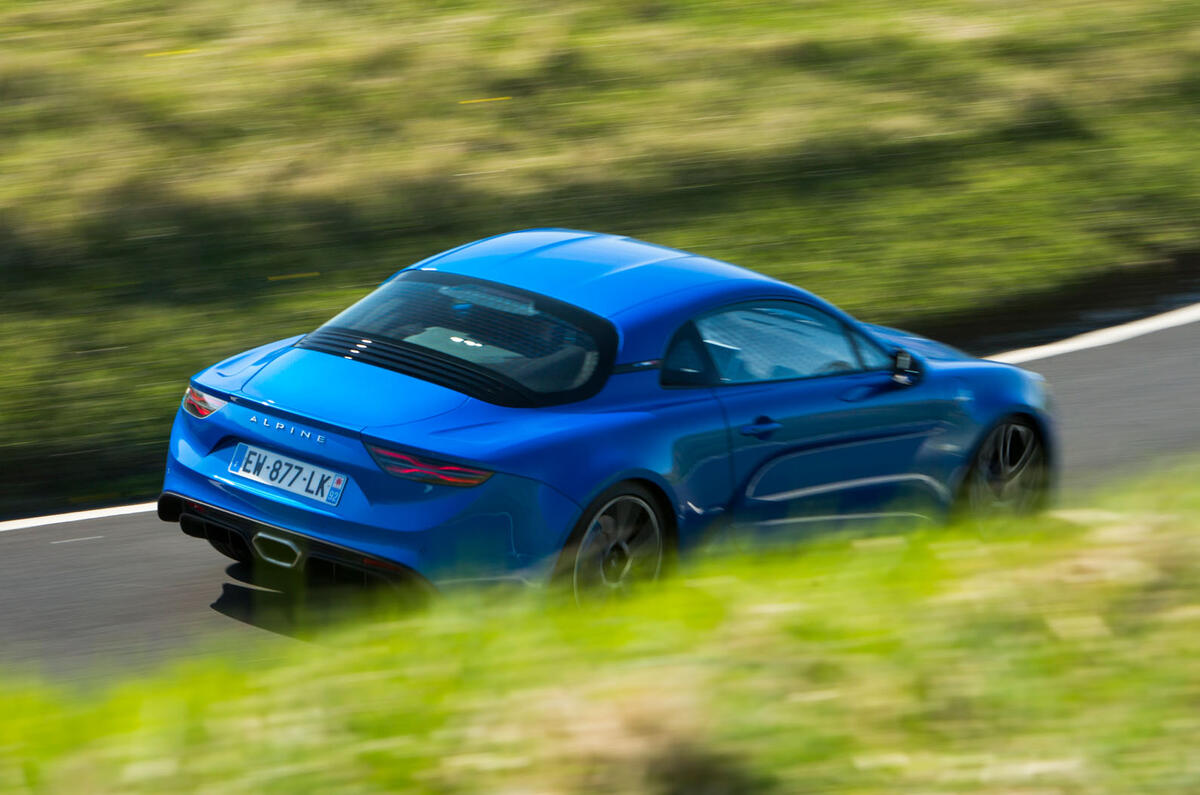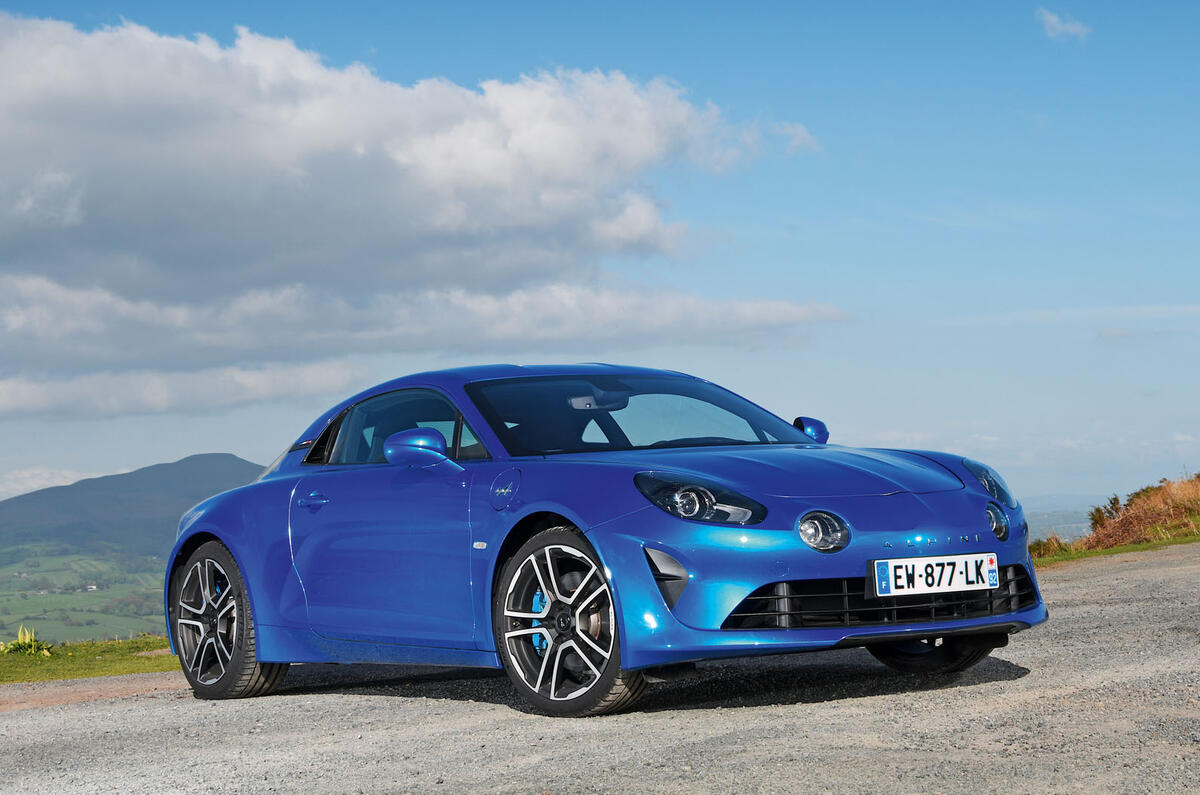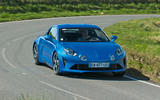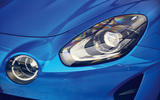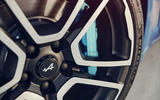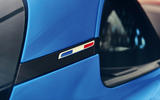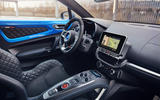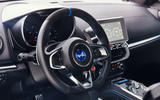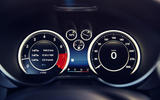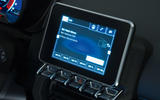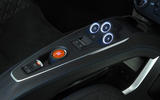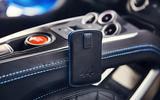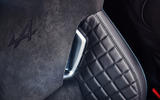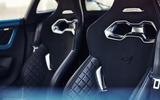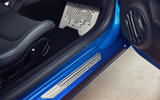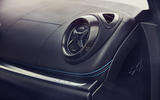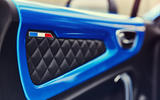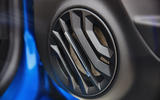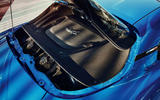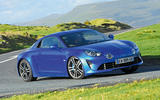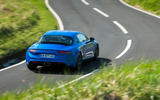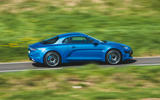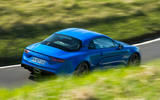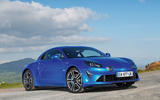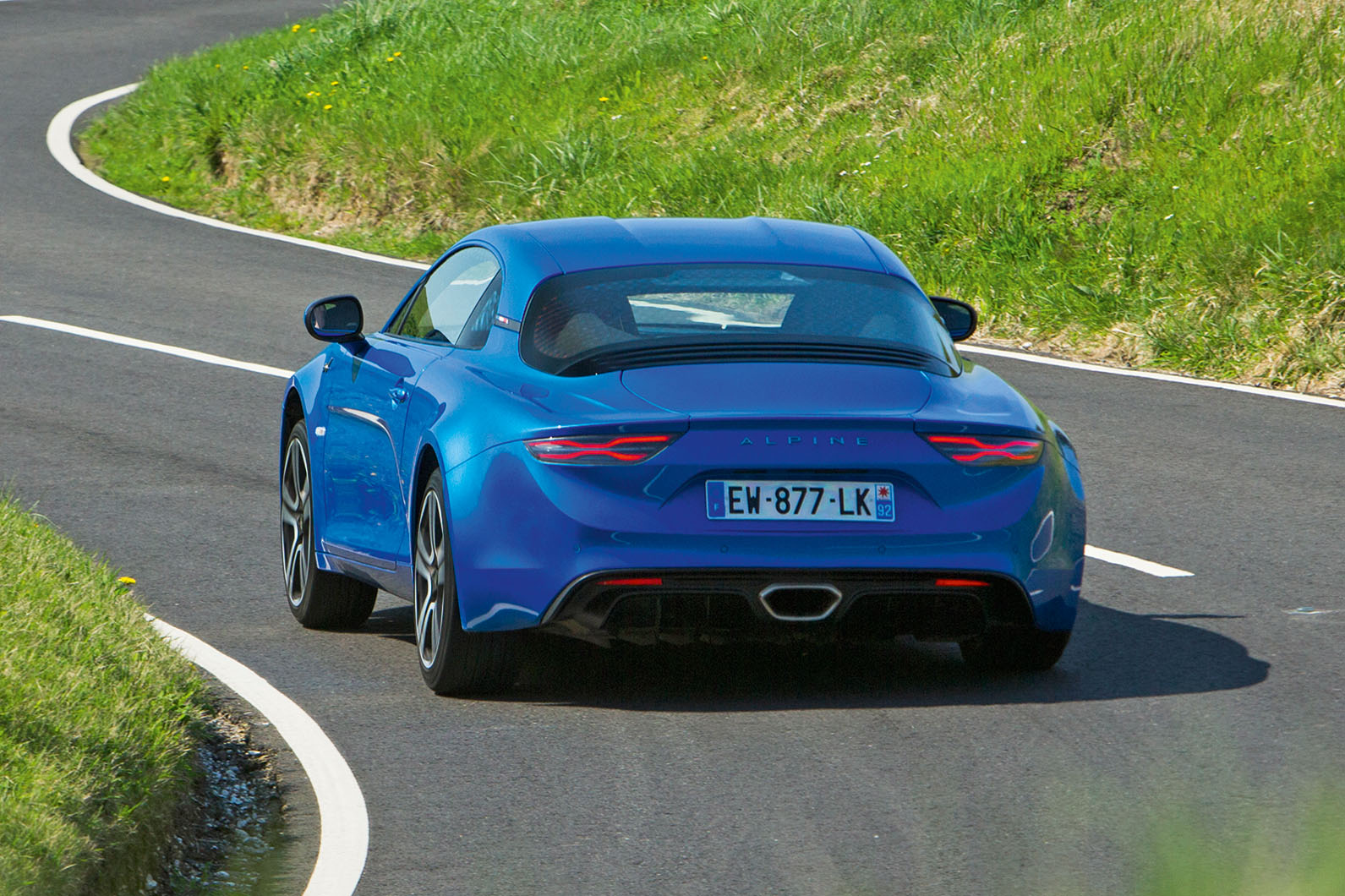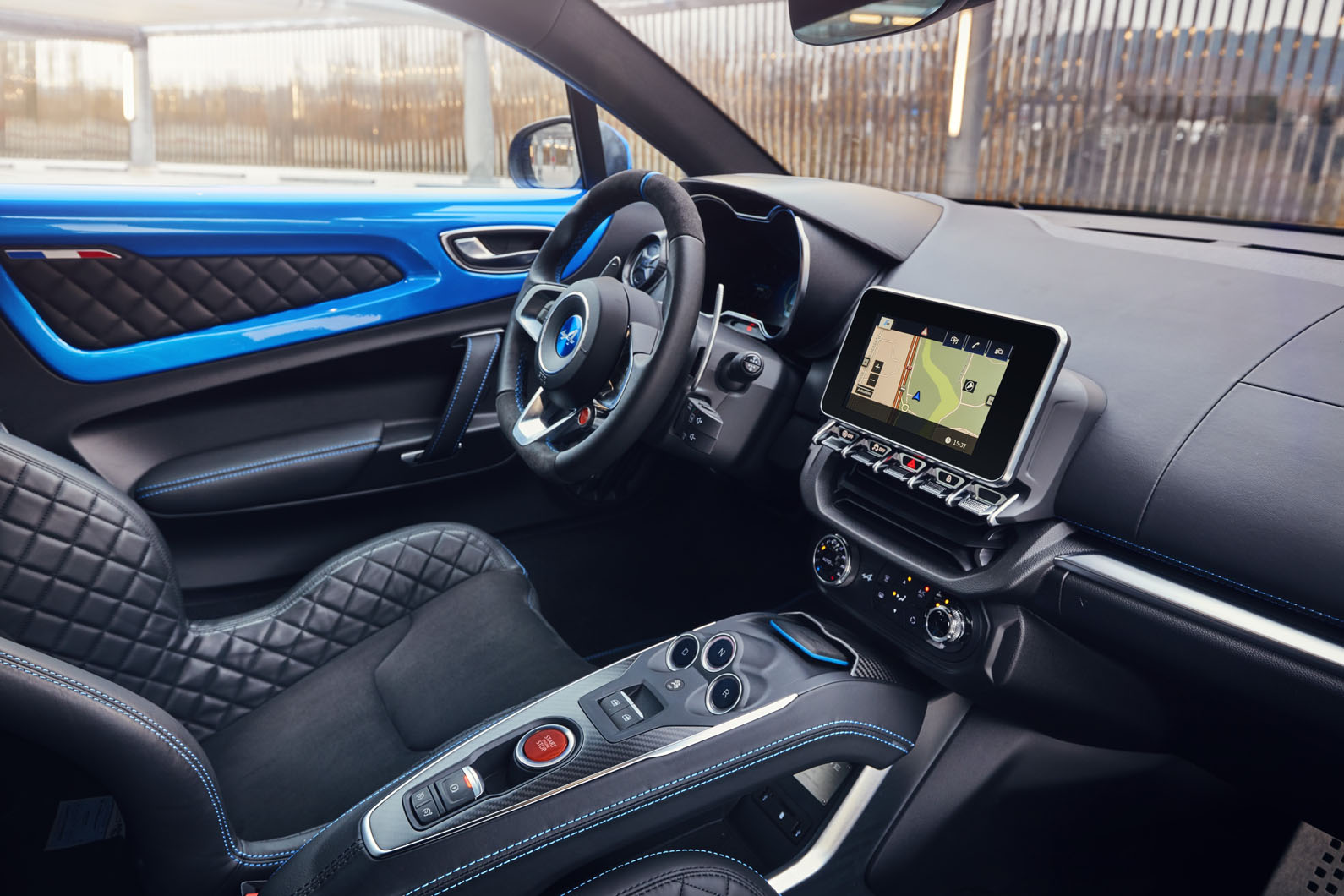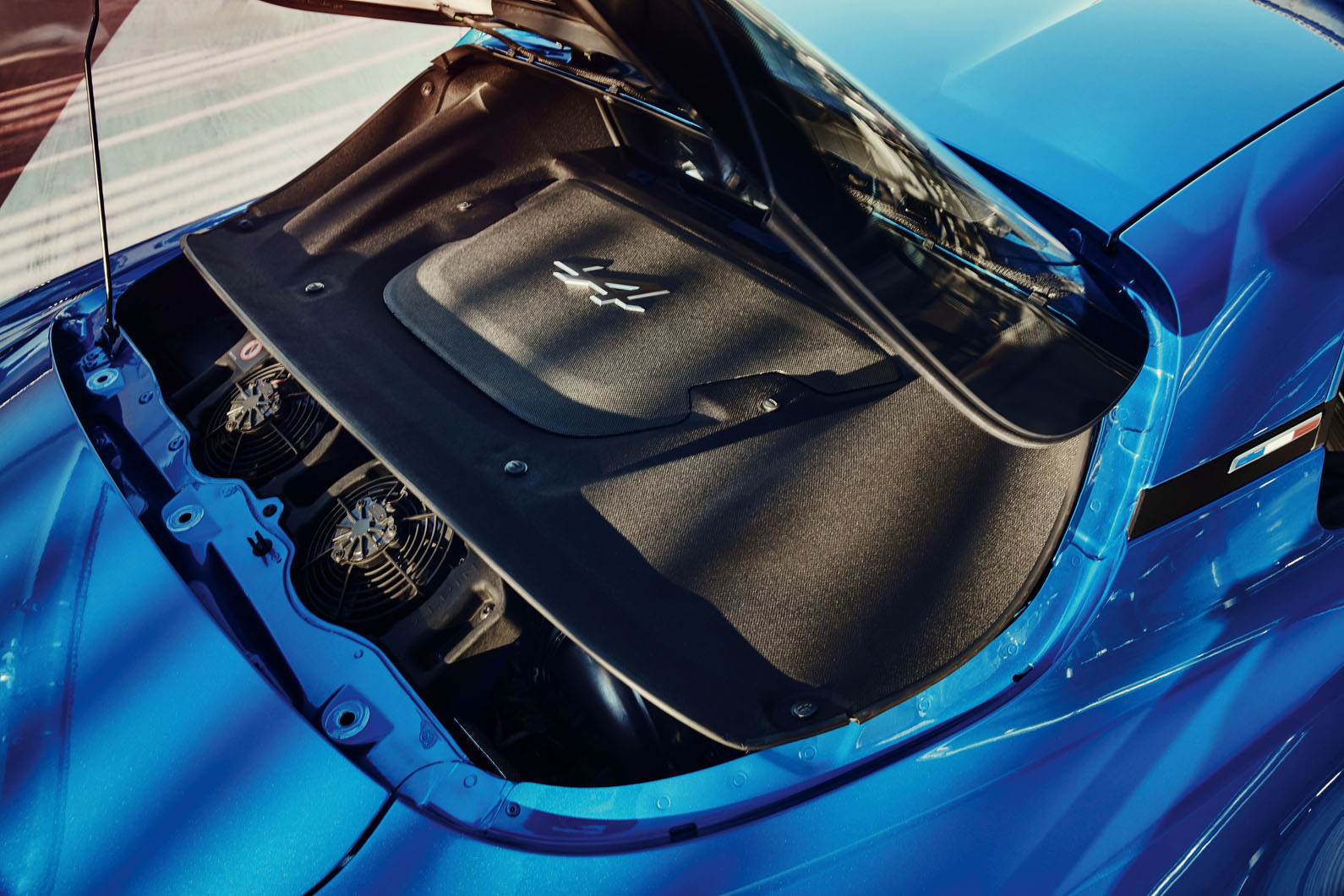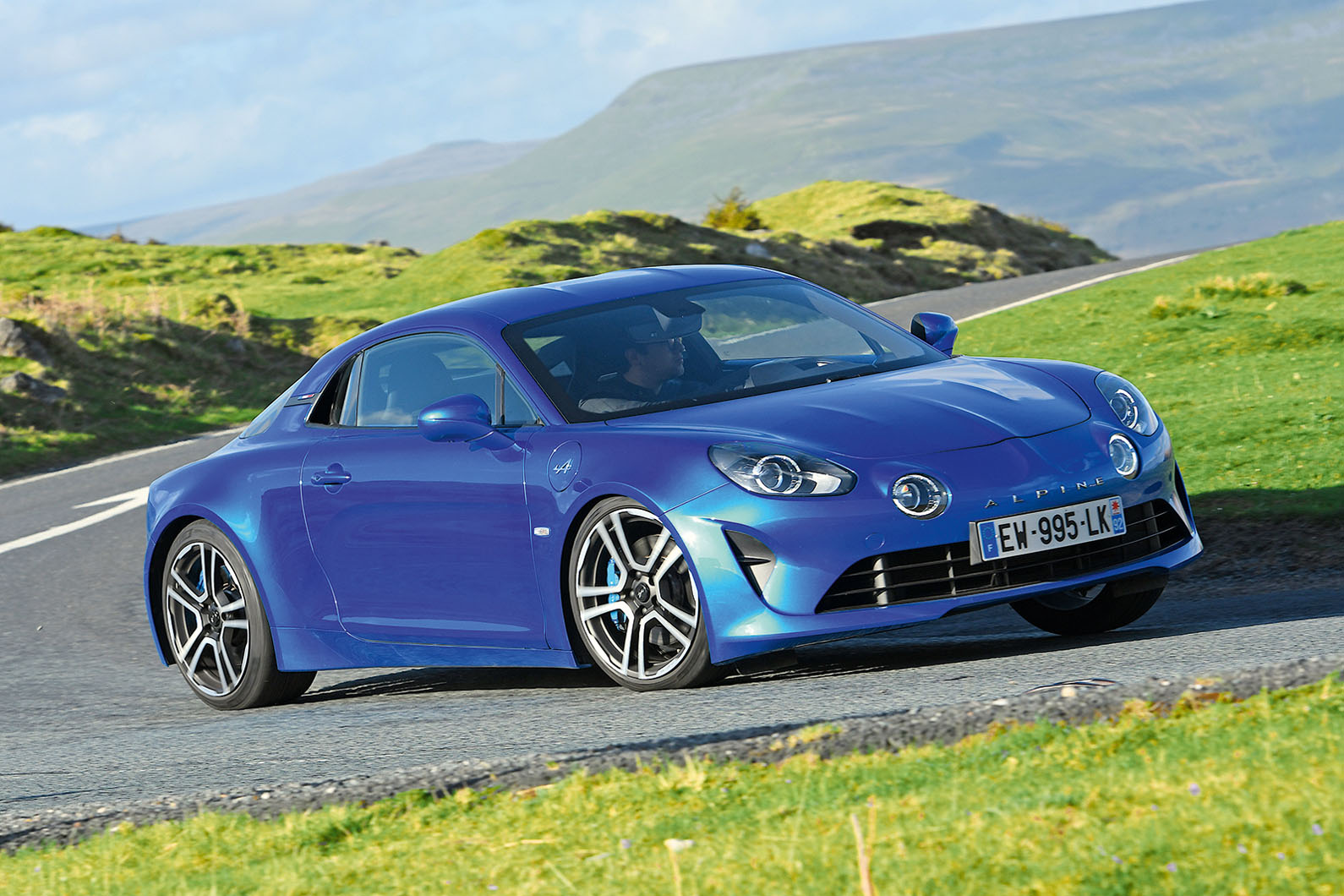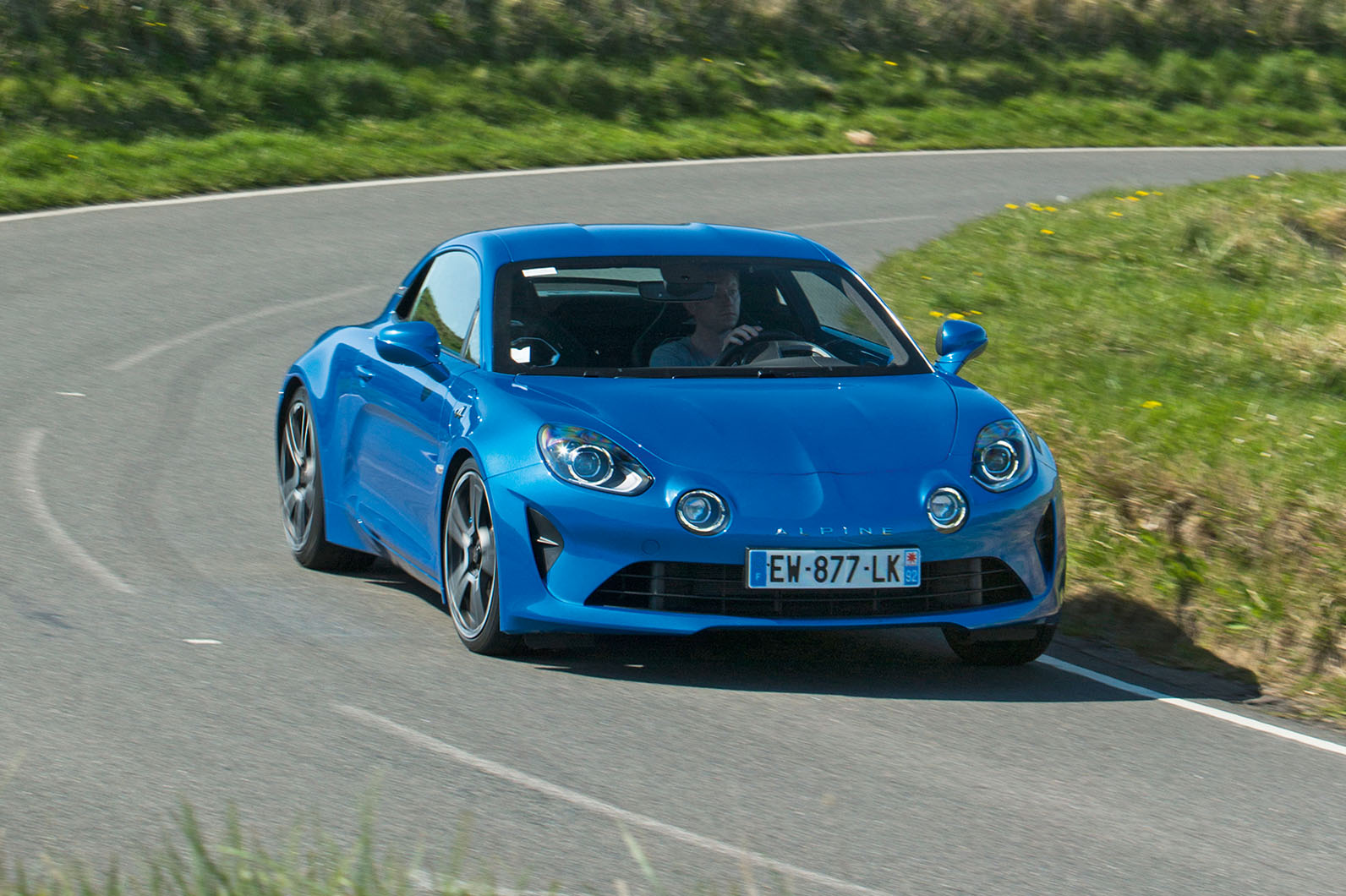Although the original 1960s A110 range offered a GT4 version with a 2+2 cabin layout, this modern successor – just like the famous Berlinette version – is a strict two-seater.
Access is easy by class standards and, inside the car, the intimate distance separating the front seats tells you straight away that you’re in compact sports car – as does the unmistakable impression of an appealingly purposeful cockpit.
The seats are deeply bolstered sports buckets with a fixed backrest angle and they’re comfortable enough that they’d be no barrier to the contemplation of a long journey. They are also one of the cabin’s material highlights, upholstered in leather and Alcantara and garnished with blue stitching.
Between them sprouts a raised centre console panel that houses an engine start button, transmission controls, electric window switches and an electronic handbrake switch. It could plainly be more solidly secured and it wobbles a little too readily to conjure the impression of quality that the leather and carbonfibre-style trim it’s finished with is aiming for.
More broadly, the A110’s perceived quality is more vulnerable to criticism than, say, an Audi TT RS’s or 718 Cayman’s is; but in a car whose mission it is to be light and simple, that’s likely to be an acceptable trade.
There are places where Renault parts bin components have plainly been deployed; those column stalks, the peculiar cruise control/speed limiter master toggle switch a mile away from the other buttons it’s associated with, and that ugly-looking steering column audio remote.
But there are other places where Alpine has equally plainly done what it can to drive the tactile appeal of the A110’s interior upwards – and they’re mostly the right places.
The car’s gearshift paddles, for example, are aluminium and located in a more intuitive position closer to the natural resting places of your hands at ‘quarter to three’ on the steering wheel than you’ll find them in some Renault Sport models, like the Renault Megane RS.
You realise how technology-obsessed the car has become when the cabin of even a compact, lightweight sports car like the A110 needs not one but two flatscreen displays. The one standing in for normal instruments is 10.0in in diameter and the central one for the nav and telematics is 7.0in.
Alpine hasn’t adopted Renault’s portrait-oriented R-Link II multimedia system, whose appearance and usability have come in for consistent criticism on these pages.
Instead, the A110 uses a simplified system that offers navigation that’s passable but not brilliant; a smartphone-mirroring system from Bosch called MySpin, which is compatible with Apple and Android and has certain advantages over the more familiar interfaces; and some fairly rudimentary but welcome lap timing and performance data display functions.
The system has only average graphics appeal but responds fairly quickly to fingertip inputs. The four-speaker Focal stereo, meanwhile, is perhaps marginally better than it needs to be – although it hardly needed to be brilliant.
The car’s chunky metallic interior door handle and leather-trimmed door pull, both of which you come into contact with frequently, are pleasant to the touch. Occupant space is good. Sitting low in the car and at the well-placed controls, there’s plenty of leg room and enough head room even for taller drivers to wear a helmet without brushing the headlining.
Oddment space is negligible and this is not a car in which to enjoy an extra large skinny mocha on your way to work; but given how many A110s will be used, you could hardly consider either a serious failure.
You’re also unlikely to quibble with the amount of storage space the A110 affords. For a sports car fully 200mm shorter than a Porsche Cayman to have decently roomy boots both up front and at the rear is usefully practical.
Alpine says the bigger front one will swallow a couple of small flight cases, although they’d have to be very small. You’d need to pack intelligently to find room for weekend luggage for two, but you could just about do it.


